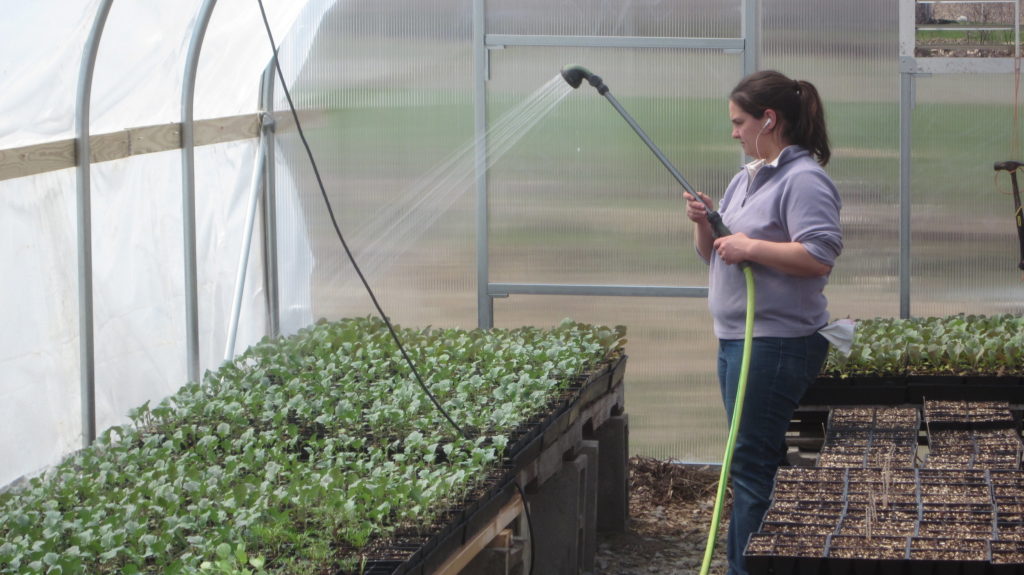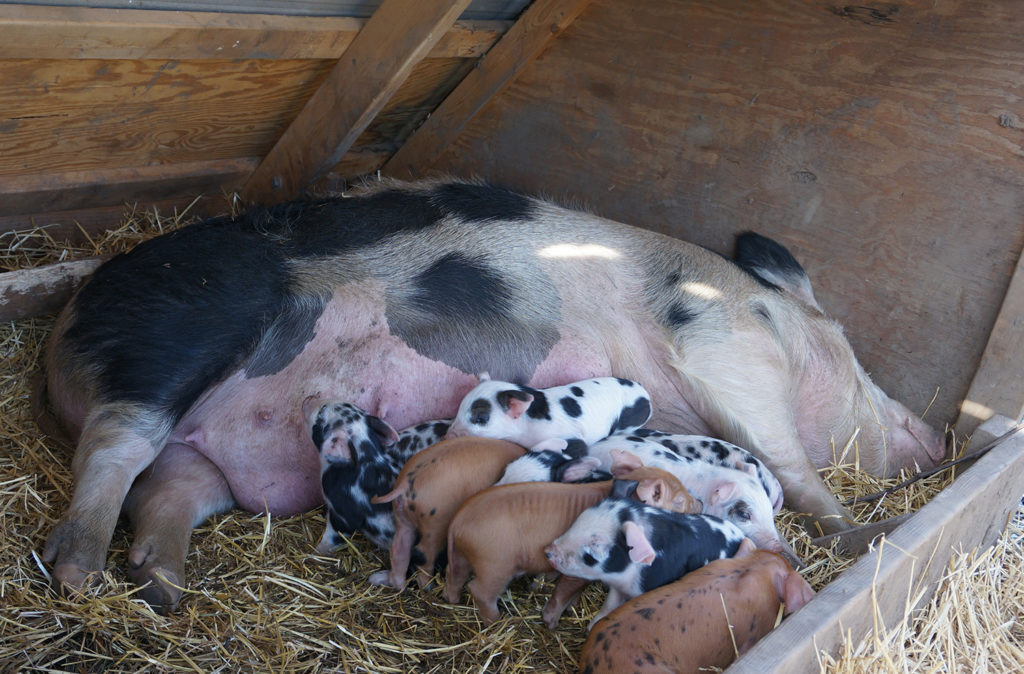An evolving Finger lakes cuisine

In its early phase, a cuisine for the Finger Lakes would need to be simple but capable of expansion and greater complexity as it comes into contact with new foods, new preparations, new cooking and other cuisines. It should be healthy, though of course anything can be taken to excess. Succotash, corn bread and grape-glazed chicken sandwiches are healthy in the sense of being well-balanced nutritionally as well as supporting the needs of an active life. The cuisine implied here is also sustainable in the sense that we know that the crops flourish here, skilled farmers could be paid to produce these crops, some ingredients could be gathered at no cost at all, some beginning has already been made, and there is a long history behind this cuisine. These foods are affordable so that they could be widely produced, distributed and eaten in the area.
I’m not posing as a culture czar, but I will make a pitch for some foods that seem central to my enjoyment of life in the Finger Lakes. They are foods that I can grow in my garden or gather from hedgerows and roadsides, and the prospect of experimenting with their tastes is exciting. Some are literally as old as the hills, others brand new to this place. Making food that tastes good is an experiment. When I teach kids about wild poisonous and edible plants of the area, sometimes I have to explain the skill that goes into cooking. I point out that their parents don’t feed them a big spoonful of wheat flour out of the bag, but that a skilled baker can take that flour, treat it properly, add some other ingredients and produce a sweet roll. The same thing goes for wild edible plants so I give them a grape or an elderberry to sample the taste.
“It’s sour!”
I say, “Someone who knows cooking, like your mom, can do something with this taste.”
A Finger Lakes cuisine could begin with our wines. Though grapes have been grown here for 150 years, our wines remained undistinguished until recently. Because of several amendments of New York State tax law in the early 1980s, farm land is taxed at a lower rate, and small, farm-based wineries are exempt from regulations that have hampered upstate New York’s economic development. With these modest advantages, farm-based wineries have flourished in the Finger Lakes, growing more than a hundredfold in twenty-five years. Though their production is still small compared to that of the Napa Valley, these wineries have begun to produce wines of unique flavor and to attract national attention.
In more recent years, breweries and the farms that produce their hops and barley have grown as exuberantly as the small wineries once did. If you like neither beer nor wine, you can wet your whistle with cider, hard cider or mead. With the production of these various alcoholic drinks, distilleries have sprung up that will increase their alcoholic content and flavors. New technology has been applied to old foods, such as maple syrup. Reverse osmosis can reduce the time and energy need for boiling by as much as fifty percent. More efficient irrigation technology, soil-conserving tillage and cover crops could protect our natural resources. Greenhouses and hoophouses could expand our growing season by months.

Access to locally produced meats and free-range eggs has been growing. Organically raised crops and milk products often from Mennonite and Amish farmers newly come to our good soils have broken into our markets. Farm markets ranging from u-pick, to roadside stands to municipally sponsored farm markets have been quickly increasing in the area. How long it will be before the local cheeses and breads that are the proper accompaniments of our wines will be crafted by expert cheesemakers and bakers? Let me re-phrase the same question: Who will milk the Jersey and Brown Swiss cows, sheep and goats twice a day daily? Who will get up at 3 a.m. to bake today’s fresh bread, cookies and cake?
What are our local strengths at this time? An abundance of milk, so milk products such as organic yogurt, cheeses and butter make sense. In recent years, high quality, specialty hay has had a local and regional market, either as high-protein alfalfa or bright rye and barley straw for racehorse bedding. There are a lot of tree fruits still raised in the Lake Ontario plain north of the Finger Lakes, so new products using domestic apples, peaches, pears, quince and plums should be sought, as baked goods, for fresh eating or as jams and jellies. Of bush fruits, we have domestic blueberries, red raspberries, and strawberries in quantity, and wild black raspberries, mints, blackberries and juneberries that could provide new flavors. We have lots of grapes, some of which are varieties that aren’t sought for wine which could be used for baked goods unique to the area, such as grape pies, or jams and jellies. Horseradish grows well in our wetter soils.
Historically, our region has produced a lot of beets, carrots and potatoes on the “muck” soils, eggs, cabbage for sauerkraut, dry beans such as Black Turtle, Soldier, Yellow Eye, Pink and Red Kidneys, and green beans, which we still have the soil and climate for but lack the market. Many of the perishable crops of our region are handicapped by our current lack of processing facilities.
Though dairy cows dominate the farm animal population, growing markets for goat milk and cheese, sheep milk cheese, beef cattle such as Herefords and Black and Red Angus, milk from other kinds of milk cows such as Jersey, Guernsey and Brown Swiss, organic pork, and free-range chickens and eggs are developing. Maybe some of those vacant dairy barns could be re-worked to support aquaculture operations raising catfish or tilapia.
Though our woods produce only a few edibles such as nuts (hickory, walnut, beechnuts), wild meats, and maple syrup, the woodlands are integral parts of many farms and also could be managed in such a way that they produce not only firewood but high grade veneer, structural and furniture woods. For too long we have low graded our woods through careless harvests. Obviously our forests cannot “pay off” overnight, but a woodlot managed to produce high grade timber has great value in the long term.
Nearly every community in the Finger Lakes now has a farm market, sometimes several, and some places have built protective structures to house them. These farm markets function as important social gathering spots as well as points of commerce for small farmers. Specialty crops, such as honey and maple syrup, baked goods, fresh fruits and vegetables, and organic produce have become much easier to find, and the chefs of our better restaurants shop the farm markets and roadside markets for the freshest and best local foods to prepare. In our cities, some of the best new eateries are located in the public markets, and our major supermarket chain promotes both locally grown and organically produced foods.
A Finger Lakes wine and culinary center, called New York Kitchen, is located near the lake in Canandaigua. It offers the opportunity to sample local foods, to improve cooking skills, and to have delicious meals and beverages grown in the area.
Some of my questions about a Finger Lakes cuisine have been answered, some remain, and these beginnings may become examples to be followed or revised by others to provide healthy, nutritious produce and preparations of new foodstuffs that will sustain residents of and visitors to the Finger Lakes while building a sustainable rural economy and culture that will become a regional heritage. Tourists of the future could find that attractive.
 Stephen Lewandowski was born in Canandaigua, NY in 1947. When his ethnobotanist parents were killed in a plane crash, he survived and was reared by bears in the Southern Tier of New York. Later, he was discovered, shaved and clothed, and sent to Hamilton College where he studied English Literature. Not completely civilized by this experience, he also did graduate work in philosophy and folklore. He enjoys being outdoors and, being recently retired from gainful employment with the Soil Conservation, hopes to range freely again. Writing, even thinking, is painful to him.
Stephen Lewandowski was born in Canandaigua, NY in 1947. When his ethnobotanist parents were killed in a plane crash, he survived and was reared by bears in the Southern Tier of New York. Later, he was discovered, shaved and clothed, and sent to Hamilton College where he studied English Literature. Not completely civilized by this experience, he also did graduate work in philosophy and folklore. He enjoys being outdoors and, being recently retired from gainful employment with the Soil Conservation, hopes to range freely again. Writing, even thinking, is painful to him.